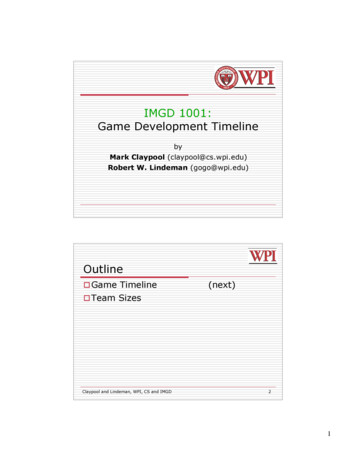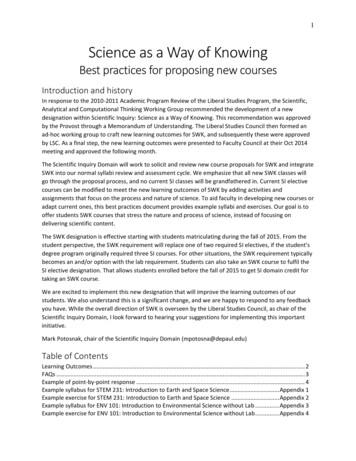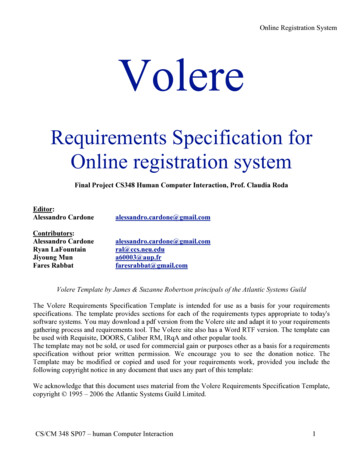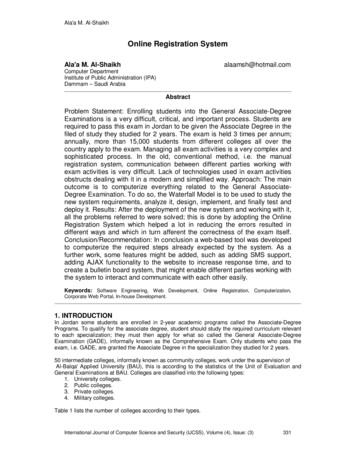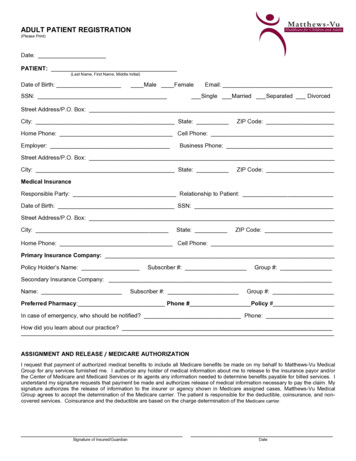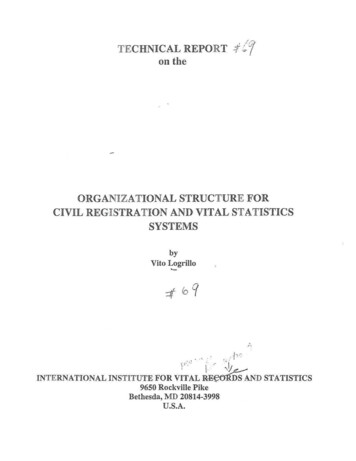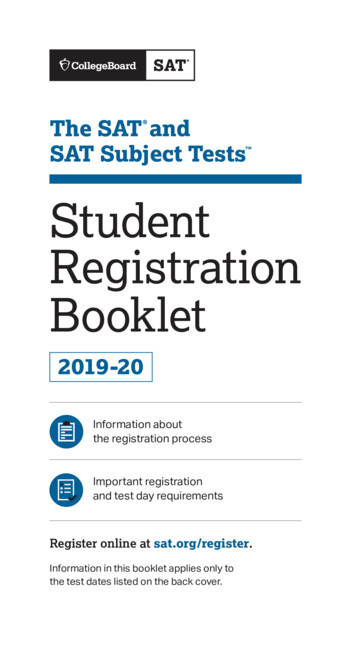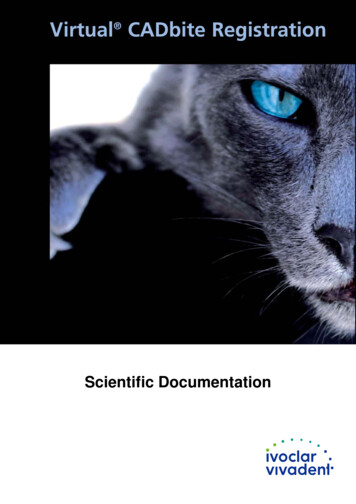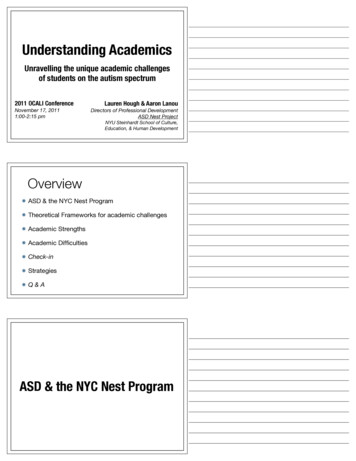
Transcription
Understanding AcademicsUnravelling the unique academic challengesof students on the autism spectrum2011 OCALI ConferenceNovember 17, 20111:00-2:15 pmLauren Hough & Aaron LanouDirectors of Professional DevelopmentASD Nest ProjectNYU Steinhardt School of Culture,Education, & Human DevelopmentOverviewASD & the NYC Nest ProgramTheoretical Frameworks for academic challengesAcademic StrengthsAcademic DifficultiesCheck-inStrategiesQ&AASD & the NYC Nest Program
Autism Spectrum DisorderSevere & pervasive impairment in several areas ofdevelopment3 core characteristics (according to DSM-IV)1. Social2. Language & communication3. Repetitive, stereotypical behavior, interests, &activitiesThe Autism Spectrumhttp://www.mccraypsychological.htmlMission of ASD Nest ProgramNested in neighborhood schools, the ASD program providesa therapeutic environment in which the requisite supports areprovided, within a grade-appropriate framework, by aninterdisciplinary, collaborative team of trained educators andtherapists. Essential to the program are classroommodifications and a variety of strategies designed to meet theacademic, social, behavioral needs of students with ASDs;and the belief that the “expert” in the program is thecollaborative multi-disciplinary team.
Inclusion program “nested” in public schoolsSocial, emotional, behavioral, & academic modifications/accommodations facilitate students’ accessing the standardcurriculumProgram-wide collaboration with related servicesSpecialized Social Development Intervention programStrong connection between home & schoolWeekly team meetings & Case conferencingMeet the NEST students“Higher functioning” students on the spectrumLittle to no language delay (excluding pragmatics)Require supports to access gened experienceSocial: hidden rules, reading the nonverbal, perspective-takingBehavioral: adhering to rules & routinesSelf-regulation: frustration tolerance, sensory REObservableDifficultiesNTAcademic: participating in groups, completing workPRetNest ProgramTHEORY OF MINDUnderlyingCausesLANOU/HOUGH 2009CENTRAL COHERENCEEXECUTIVE FUNCTIONINGStrategies
Theoretical FrameworksTheoretical FrameworksTheory of MindCentral Coherence TheoryExecutive FunctioningTheory of MindThe ability to recognize and interpret otherpeople’s thoughts, feelings, beliefs and intentionsempathymind-blindnessperspective takingThe Sally-Anne taskShe has to “compute” other’sintentions and states of mind, to tryto make algorithmic, explicit what forthe rest of us is second nature.O. Sacks, 1995 p. 270
Central CoherenceTheoryDifficulty conceptualizing the “big picture” or “gist”Hyper-focus on details at the expense of the largercontextInformal interviewCan’t see the forest for the trees?!I can’t see the forest for the veinson the leaves.ExecutiveFunctioningOrganizing and coordinating multiple cognitivetasks, such as:recalling & applying information from memoriesattention & self-monitoringflexibility in problem solvingtime management & prioritizingabstract thinkingWithout appropriate support, the childwith Asperger’s Syndrome may feel he isdrowning in a million different sub-tasks.Company CEOS. Shore in Attwood, 2007WRITINGPHYSICAL ACTSBodyCoordinationPosturePencilGripCREATIVITY & IDEASPROCESSLetterformationScriptThe WritingProcessKnowledgeof GenrePrintMy tionalknowledgeEditRevise
Academic StrengthsAcademic Strengths:ReadingWord reading (hyperlexia)NonfictionRecalling detailsAcademic Strengths:WritingCreativityGrammar & syntaxExtensive writing on topics of interest
Academic Strengths:MathematicsComputationRecall of basic factsFollowing algorithmic proceduresAcademic DifficultiesReadingReading Challenges1.Tracking a story / synthesizing text2.Thinking about characters3.Understanding figurative & higher-order language
1Tracking a Story &Synthesizing TextRecognizing narrative text structureFinding the main ideaDetermining the importance of detailsObtaining relevant information from picturesTracking a story across chapters2Thinking aboutCharactersUnderstanding character thoughts & feelingsConsidering character motivation & intentionInferring internal character traitsMaking self-to-text connectionsDrawing inferences independentlyFigurative &3 UnderstandingHigher-Order LanguageRecognizing multiple meanings of wordsGus makes a tape.He says, “Gus, Gus, Gus ”until the tape ends.Level H text (1st grade)
Figurative &3 UnderstandingHigher-Order LanguageUnderstanding idioms & figures of speechBut you always say you’llhandle it and Justin getsaway with murder.Level P text (3rd grade)Figurative &3 UnderstandingHigher-Order LanguageMaking sense of similes & metaphorsAnd you ought to see hisroom. Like Grandpa’s pigpen!Level P text (3rd grade)Figurative &3 UnderstandingHigher-Order LanguageInterpreting figurative languageJack watched with mountingexcitement. It might take a bird to hatcheggs, but a boy could hatch a plan!Level Q text (4th grade)
NONSENSE WORDNON-LITERALLANGUAGEPERSPECTIVETAKING“Emily looked down at the book. It had about askillion pages. It would take forever to read.“Well ” she said. “Go ahead. Try it,” said Freddie.“I guess so,” Emily said. She went to Mrs. Baker’sdesk. Too bad she didn’t have a skinnier book. SheDECEPTION looked back. Freddie was talking to his friendEdward. Emily stuck the fat book on the book cart.She grabbed another one. It was much skinnier.She gave it to Mrs Baker. Mrs. Baker checked it out.“You like snakes?” she asked. “Yucks,” said Emily.Then she looked at the book. There was a snake onthe cover. It was the kind with the fat neck. Its toothwas sticking out. “I mean, I love them,” Emily said.”PERSPECTIVE-TAKING & LYINGIRRELEVANT DETAILINFERENCEAcademic DifficultiesWritingWriting Challenges1. Concept of writing2. Organizing and prioritizing3. Considering characters and audiencePickle Puss by PatriciaReilly Giff, pp. 4-7
1 Concept of WritingThe Writing ProcessBrainstormingUnderstanding different genresOrganizingRecalling episodic memoriesDraftingRevising and accepting critiqueRevisingAppreciating writing as a processEditingPublishing2 Organizing & PrioritizingPlanning and organizing structureUnderstanding details and the main ideaManaging time and self-monitoringCompleting long-term projects3Considering Characters& AudienceConsidering thoughts and feelingsUnderstanding motivation and intention“Showing versus telling”Recognizing what your audience knows/needs to know
Academic DifficultiesMathMath Challenges1. Abstract concepts2. Abstract skills3. Word problems4. Explaining thinking1 Abstract Concepts1) 4 x Evaluate if x 2Geometry2) Find the value of x:2 x 61) Find the perimeter ofthe regular polygon:4 ftAlgebra[not drawn to scale]
2 Abstract SkillsWhat is 3,200 700?Rounding numbersEstimating numbers“Guessing & checking”That’s 3,900.Now make an estimate:around what number is4,250 2,824?Hmmm a million?Yeah, around a million.3 Word ProblemsEnvisioningIdentifying relevant informationPlanning & executing multi-step problemsMr. Arnold has 13 pencils and onecalculator for his students. Lisa needstwo pencils, Omar needs three pencils,and Lyla needs five pencils. How manypencils will Mr. Arnold have left?4 Explaining ThinkingChecking work for accuracyTrying alternate strategiesExplaining reasoning with words
Check-inStrengthsReadingword readingnonfictionrecalling detailsWritingcreativitygrammar & syntaxwriting on topics of interestMathcomputationrecall of basic factsalgorithmic proceduresChallengesReadingnarrative text structuremain ideadetermining importanceinformation from picturestracking a storyWritingconcept of writingorganizing and prioritizingcharacters and audienceMathabstract conceptsabstract skillsword problemsexplaining thinkingAcademic Strategies
Academic StrategiesInstructional principles:VisualsGraphic organizersSocial-cognitive strategiesAcademic StrategiesBenefits:Use visual strengthOrganize informationConcretize abstract conceptsAcademic StrategiesVisuals
VisualsVisual cuesChecklistsColor codingSchedules & calendarsGraphic representationsThink about yourcharacterThink abouthow your life relates tothe text
EXPLAIN YOUR MATH THINKING!THE ANSWER IS . I USED THESTRATEGY.I KNEW/NOTICED THAT.FOR EXAMPLE, .THEREFORE, I .THAT IS HOW I .EDITING vember 2011Sunday1Monday2Tuesday3Wednesday ns dueGathering8910*topic dueDrafting1516*draft due17222324*editing due2930RevisingEditingPublish31WRITINGDUE25262728
Graphic Representationof Making an Inference What thetext says Your thinkingINFERENCERUBRIC FOR EXPLAINING YOUR WORKON THE STATE MATH TESTCategory3210Work ShownShows all workShows some workShows a little workShows no workMultiple Partsof QuestionsAnswered all parts of Answered some parts Answered one part ofthe questionof the questionthe questionDid not answer thequestionSolution is partiallycorrect, but work isshownSolution is not correctand no work is shownCorrectSolutionSolution is correctCorrectOperationUsed and explainedcorrect operationUse Words inExplanationSolution is partlycorrect with a littlework shownUsed correctDid not use correctDid not use correctoperation, but did not operation but showed operation and showedexplainsome workno workExplanation of answer Explanation of answerExplanation of answerExplanation of answeris some what clear in is not really clear butis clear and in wordsis not includedwordsis in wordsAcademic StrategiesGraphic Organizers
Graphic OrganizersTiming:Before instructionDuring instructionAfter instructionTHEMATIC talizingproper nounsAcademicSubjectsSocialStudiesMathIn My Opinion . . . (Main Topics and Supporting Points)GRAPHIC ORGANIZERFOR CLASSICFIVE-PARAGRAPH ESSAYFive-Paragraph EssayMain Idea, Introductory and Thesis ParagraphSupport/Proof DetailsSupport/Proof DetailsSupport/Proof DetailsSummary/Conclusion Teacher Created Resources, Inc.#3208 Graphic Organizers: Grades 4–8
GRAPHIC ORGANIZER FOR “LEVELS OF KNOWLEDGE”Name:Date:Understandthink a bitMy Conclusionone thing right therein the textsomething I know aboutthat kind of situationcharacter says“I guess so ”when I say that,it means that I’mnot totallyconvinced I cando itthe characterisn’t confidentthat she can readthe book that theboy picked outfor herDifficulty Rating:NOTE-TAKING ORGANIZERFOR READING STRATEGY,“RECIPROCAL TEACHING”Name:Date:Title: Starting Page:predictTell what you think will happen next.READ!clarifyClear up confusing words or parts.questionAsk teacher-type questions.?summarizeTell what it was mostly about.predictTell what you think will happen next.Academic StrategiesSocial-CognitiveStrategies
Social-CognitiveStrategiesSocial storiesComic strip conversationsSocial detective agencySocial Stories &Comic Strip ConversationsCarol GraySocial storyprocess producing a short story that explainsa situation, concept, or expectationComic stripdialogue and thought bubbles are used toillustrate ongoing conversation and clarifysocial situationsSocial Story:Reading ComprehensionEmily looked down at the book. It had about a skillion pages.It would take forever to read. “Well ” she said. “Go ahead.Try it,” said Freddie. “I guess so,” Emily said. She went toMrs. Baker’s desk. Too bad she didn’t have a skinnier book.She looked back. Freddie was talking to his friend Edward.Emily stuck the fat book on the book cart. She grabbedanother one. It was much skinnier. She gave it to Mrs Baker.Mrs. Baker checked it out. “You like snakes?” she asked.“Yucks,” said Emily. Then she looked at the book. There wasa snake on the cover. It was the kind with the fat neck. Itstooth was sticking out. “I mean, I love them,” Emily said.
Social Story:Reading ComprehensionIn this paragraph, Emily and her classmates are at the library checkingout books. Emily finds a book with lots of pages. Another student,Freddie, convinces her to check out that book, even though she thinksthat it’s too long for her. Then, when Freddie is not looking, she grabs adifferent, shorter book.Many people feel embarrassed when others see or might see thatsomething is hard for them. Sometimes students get embarrassed whenthey can’t do things that their classmates can do. In our classroom,sometimes people may feel embarrassed when they get a math factwrong or when they miss a word on their spelling test. In this situation,Emily takes the book Freddie suggests because she feels embarrassedand does not want him to know that she thinks that the book is too long.Then she waits until he looks away to grab a different book so that he willnot know that she needed a shorter book.Comic Strip ConversationsComic Strip Conversations
Michelle Garcia Winnerusing the framework of a mystery to teachsocial thinkingrecognizing and interpreting cluesusing clues to make “smart guesses”trying to figure out other people’s plansSocial Detective AgencyUse clues to. figure out others’EYE CLUESFACIAL CLUESBODY CLUESWORD CLUESthoughts & feelings make smartguesses aboutother’s LUESPRetSocial Detective AgencyTHEORY OF MINDUnderlyingCausesLANOU/HOUGH 2009CENTRAL COHERENCEEXECUTIVE FUNCTIONINGStrategies
Understanding AcademicsQ&AReferencesAttwood, T. (2007) The Complete Guide to Asperger Syndrome. Jessica Kingsley Publishers:Philadelphia, PA.Goodman, G. & Williams, C. M. (2007) Interventions for increasing the academic engagementof students with autism spectrum disorders in inclusive classrooms. Teaching ExceptionalChildren, July/August, 53-61.Gately, S.E. (2008) Facilitating reading comprehension for students on the autism spectrum.Teaching Exceptional Children 40(3), 40-45.Gray, C. (2000) The New Social Story Book. Future Horizons, Inc.: Arlington, TX.Gray, C. (1994) Comic Strip Conversations. Future Horizons, Inc.: Arlington, TX.Joliffe, T. & Baron-Cohen, S. (2001) A test of central coherence theory: Can adults with highfunctioning autism or Asperger syndrome integrate fragments of an object? CognitiveNeuropsychology, 6(3), 193-216.Latner, E. & Watson, L. R. (2008) Promoting literacy in students with ASD: The basics for theSLP. Language, Speech, and Hearing Services in Schools, 39, 33-43.Sacks, O. (1995) Anthropologist on Mars. Vintage Books: New York, NY.Winner, M. G. (2005) Think Social: A social thinking curriculum for school-age students.Michelle Garcia Winner: San Jose, California.
Mission of ASD Nest Program Nested in neighborhood schools, the ASD program provides a therapeutic environment in which the requisite supports are provided, within a grade-appropriate framework, by an interdisciplinary, collaborative team of trained educators and therapists
